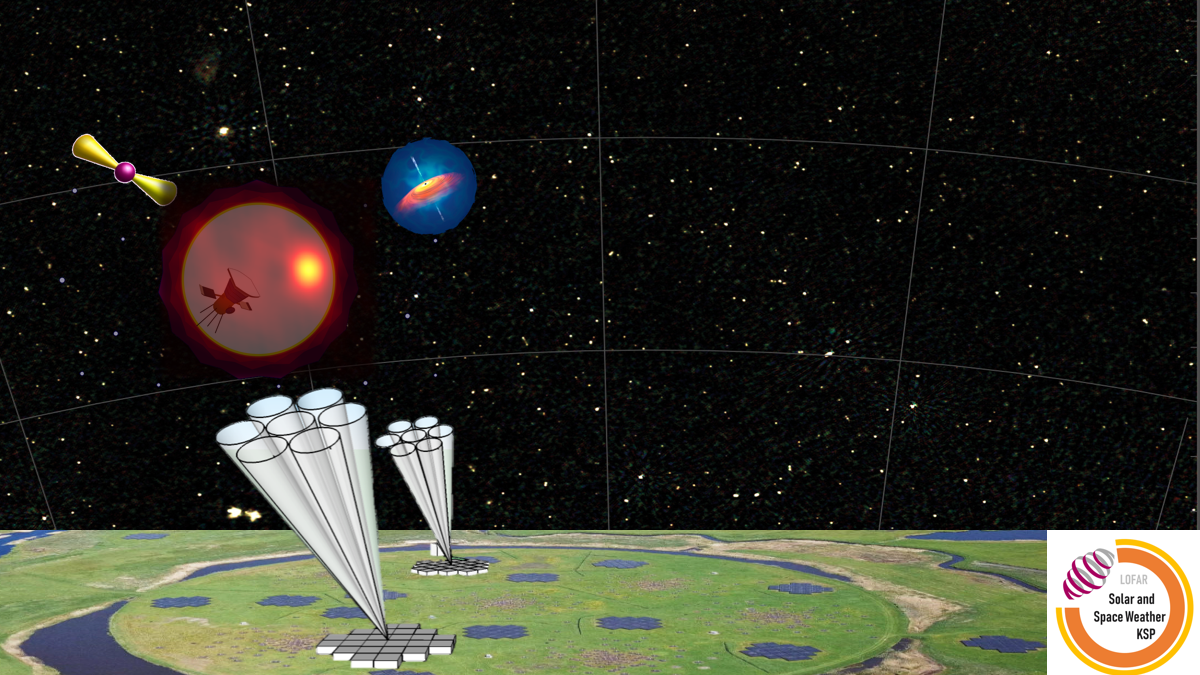Current Observing Campaign
Understanding and modelling the complex environment of the Sun and inner heliosphere is a difficult task that requires a comprehensive set of observations. The unique capabilities of LOFAR provide:
a) high-resolution solar dynamic spectra and radio images of the Sun;
b) interplanetary scintillation (IPS) observations of compact radio sources to determine the density, velocity, and turbulence structure of the solar wind; and
c) Faraday rotation (FR) observations of pulsars as a tool to probe the interplanetary magnetic-field strength and direction.

A full understanding of the processes in the solar corona and inner heliosphere as well as their impact on the space environment around Earth, requires a combination of ground-based remote sensing observations with the finer detail and additional viewpoints provided by in-situ spacecraft. Ground-based radio observations are essential to construct a global picture of an inner heliosphere modulated by the dynamics of the solar wind and solar eruptive processes such as coronal mass ejections (CMEs). They are highly complementary to space-based remote-sensing observations and in-situ measurements, which provide ground truth to the deconvolution and modelling methods needed to extract information from the line-of-sight integrated radio results. This complementarity has entered a new and exciting phase with the deployment of the Parker Solar Probe (PSP) and Solar Orbiter (SO, launched Feb 2020) missions that sample the inner heliosphere closer to the Sun than any previous mission. Observations using LOFAR are particularly important in this era because their synergy with the novel PSP and SO results can constrain state-of-the-art solar wind and CME models such as EUHFORIA. The current KSP observing campaign is enhancing and expanding upon the recent successful LOFAR/PSP campaigns using LOFAR in conjunction with remote-sensing observations and in-situ measurements of PSP.
Schedule
- LT16_001 Next Observations will start in Spring 2021, see the full LOFAR schedule for Cycle 16.
